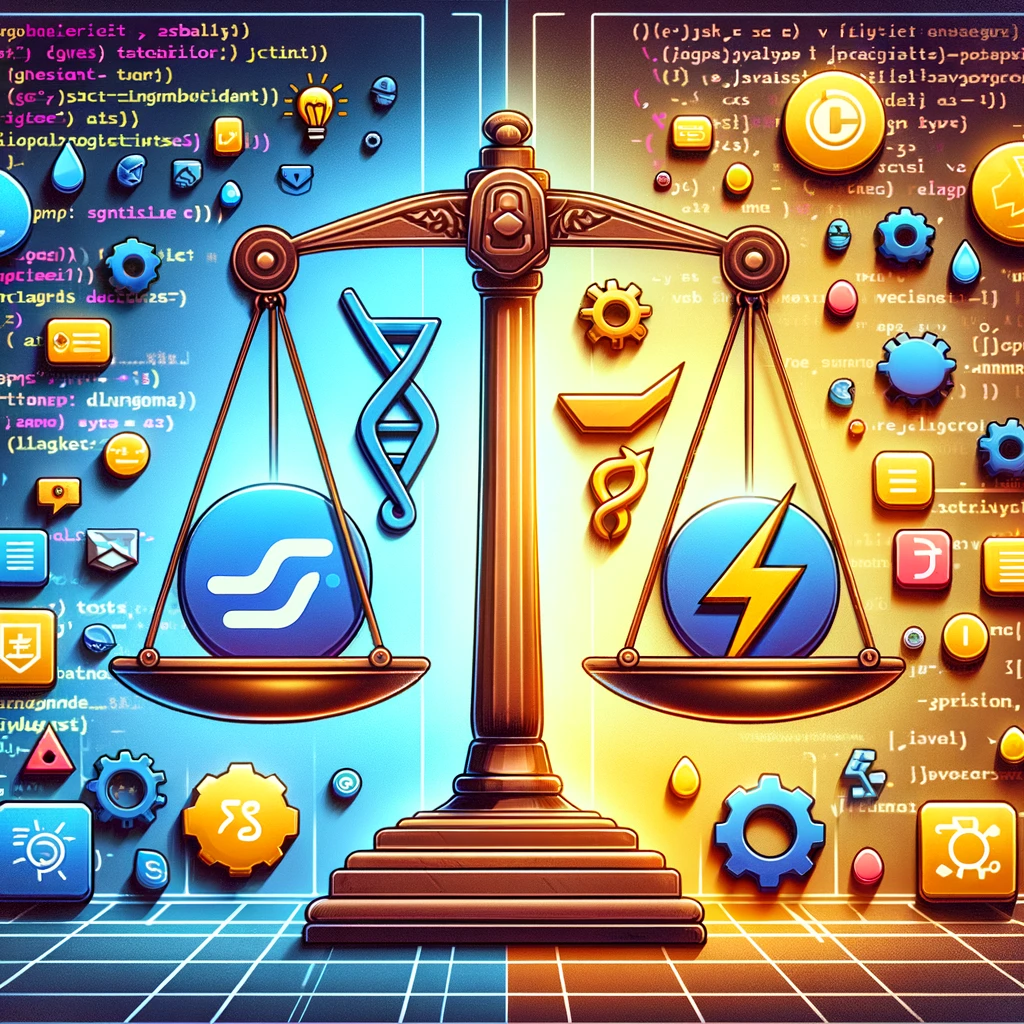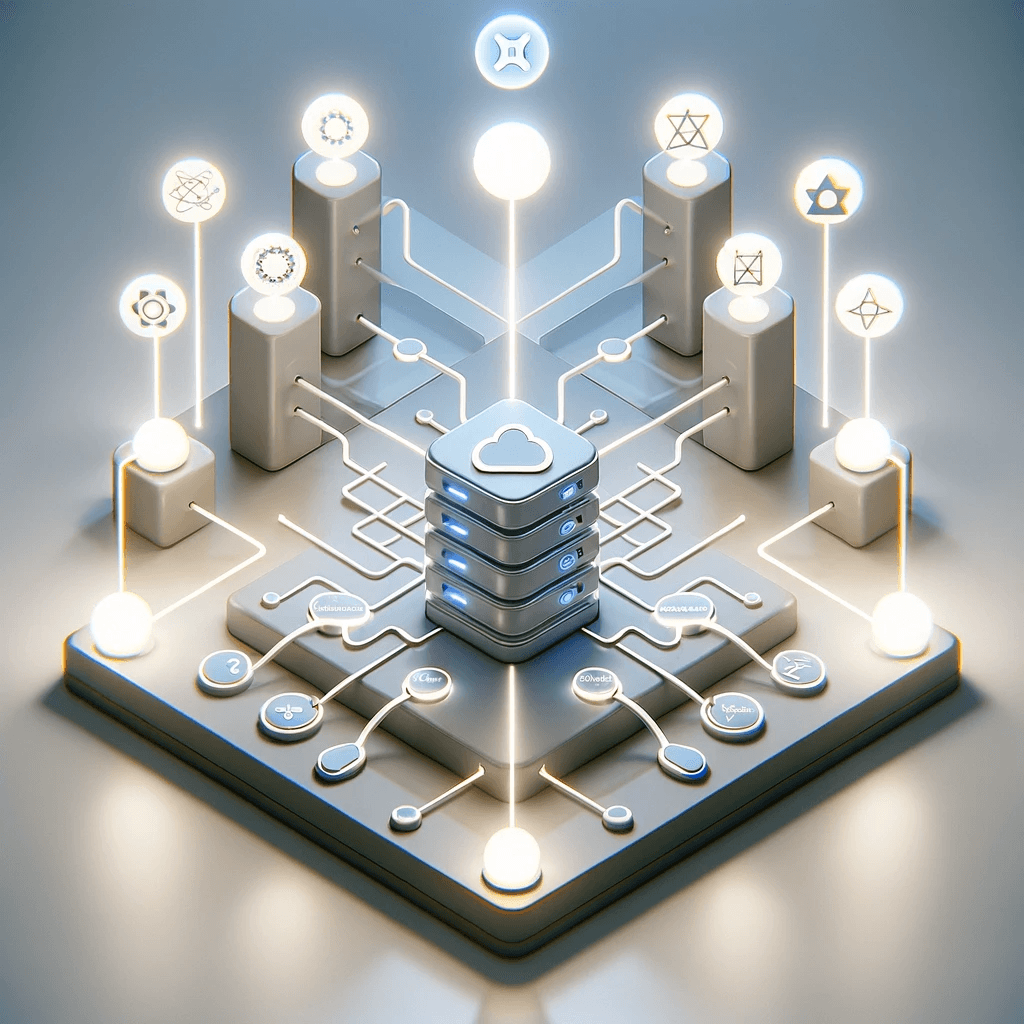Building Dynamic Web Applications with React and Orbitype

Understanding the Synergy Between React and Orbitype
API-driven development has revolutionized the way developers build applications. React's component-based architecture allows developers to create reusable UI components, while Orbitype provides an API-first approach to manage content. This combination enables developers to build dynamic web applications more efficiently.
React’s structure is naturally suited to Orbitype’s API-driven content delivery. Each React component can request specific data from Orbitype’s API, rendering it dynamically. This decoupling of content and presentation ensures that changes in the content do not require changes in the application code, making updates seamless and efficient.
Improved Performance and Scalability
One of the significant advantages of using Orbitype with React is the enhanced performance. Orbitype delivers content through API endpoints, fetching data only when needed. This reduces server load and improves response times, leading to a faster user experience.
Scalability is another critical factor in modern web applications. Applications built with React and Orbitype can handle high traffic and content loads efficiently. Since Orbitype is a headless CMS, it manages content updates independently of the front-end. Developers can update content in Orbitype without redeploying the application, ensuring continuous and uninterrupted service.
Streamlining Workflows with Orbitype’s Content Modeling
Orbitype’s content modeling features are designed to streamline workflows for developers. By creating and managing content types, developers can structure content to fit React components perfectly. This structured approach ensures that content is organized and easily accessible.
For instance, in a blog application, you can create content models for "Blog Post," "Author," and "Category." Each model contains fields like title, body, author, and tags. This setup allows React components to fetch and display data efficiently. The structured content models ensure that content is dynamically fetched and displayed, allowing for seamless updates.
Practical Implementation Examples
Building a Blog Application:
To illustrate, consider a blog application built with React and Orbitype. Start by setting up content types in Orbitype for "Blog Post," "Author," and "Category." For more examples of how Orbitype integrates with different frameworks beyond React, check out our guide on Integrating Orbitype with Popular Front-End Frameworks. These content types will have fields like title, body, author, and publish date. React components can then fetch and display this data dynamically.
In this setup, the blog posts are displayed by a component that requests the list of posts from Orbitype’s API. Each blog post is rendered using another component that receives the post data as props. This method ensures that content updates in Orbitype are reflected in the application without requiring any code changes.
Developing a Product Catalog:
Another example is a product catalog. Create a content model in Orbitype for "Product," including fields like name, description, price, and image. React components can then fetch and display product data, creating a dynamic and responsive catalog. For a more detailed look at how Orbitype can streamline content management in e-commerce, check out our guide on leveraging Orbitype for efficient content management in e-commerce.
Best Practices and Tips for Developers
Optimizing API Calls: To minimize the number of API calls, fetch only the necessary data and use caching mechanisms to store frequently accessed data. Implementing pagination or lazy loading for large datasets can also enhance performance.
Content Modeling Best Practices: Define clear and consistent content types to avoid redundancy. Use meaningful field names and data types, and regularly review and update content models to match evolving requirements.
Maintaining Performance and Scalability: Monitor API performance and optimize queries as needed. Scale your Orbitype infrastructure to handle increasing loads, and use a CDN (Content Delivery Network) to improve content delivery speed.
Conclusion
Combining React and Orbitype offers numerous benefits for building dynamic web applications. The synergy between these technologies enhances performance, scalability, and content management efficiency. By leveraging Orbitype's content modeling features and React's component-based architecture, developers can streamline workflows and create powerful, dynamic web applications. Whether you're building a blog, a product catalog, or any other application, integrating React with Orbitype provides a robust solution for managing and delivering content seamlessly. Try Orbitype for your next React project and experience the advantages firsthand.
Explore the Future of Content Management with Orbitype
Visit our Home Page and embark on a journey through the world of efficient content management! Scroll through our innovative features, enjoy seamless integrations, and discover the perfect solution tailored to your needs. Experience the power of Orbitype and see how we can elevate your projects. Don’t wait, dive into the future now at Orbitype!
Read more

Seamless Data Management: Integrating Wasabi Cloud Storage with Orbitype
Boost your CMS performance with Wasabi Cloud Storage and Orbitype integration. Learn how this cost-effective, scalable solution enhances data management and delivers exceptional results.

Integrating Orbitype with Nuxt.js for Optimal Performance and SEO
Leveraging Orbitype, a robust headless CMS, with Nuxt.js, a Vue.js framework, provides developers a powerful solution for building fast, SEO-optimized websites. This blog post explores how the integration of Orbitype and Nuxt.js harnesses the benefits of static site generation (SSG) and server-side rendering (SSR), thanks to Orbitype's API-driven content management system.

TypeScript vs. JavaScript
Discover the synergy between TypeScript and JavaScript for web development. Learn how Orbitype supports Nuxt CMS, headless CMS for Nuxt, and future-ready digital trends.

Building Progressive Web Apps (PWAs) with Orbitype
Explore how Orbitype enhances Progressive Web Apps (PWAs) with optimized performance, offline capabilities, and seamless content management for superior user experiences.

Leveraging Orbitype for Efficient Content Management in E-Commerce
nhance your e-commerce performance with Orbitype CMS. This scalable headless CMS simplifies content management, boosts SEO, and seamlessly integrates with Shopify, WooCommerce, and Magento for dynamic, flexible solutions.

Mastering Third-Party Integrations with a Headless CMS for Efficient Workflows
Streamline workflows and scale your business with seamless third-party integrations using Orbitype's flexible headless CMS—designed for efficiency, automation, and growth.

How Orbitype Compares to Headless CMS Leaders in 2025
Struggling to choose the best CMS? Discover how Orbitype compares to headless CMS leaders in 2025, solving complexity and scalability challenges with ease. Try Orbitype!

How Educational Institutions Benefit from Headless CMS for Online Learning
Enhance online learning with a Headless CMS. Discover how centralized content management, scalability, and seamless multi-channel access can transform educational platforms.

Nuxt vs Next: Which Framework Works Best with Headless CMS?
Compare Nuxt.js and Next.js to find the best frontend framework for your Headless CMS. Discover which offers better performance, scalability, and flexibility for dynamic web projects.

Streamlining Development: Integrating Orbitype with Top DevOps Tools
Discover how to integrate Orbitype with leading DevOps tools like Jenkins, Docker, and Kubernetes. Learn best practices for automating deployments, containerizing Orbitype, and scaling efficiently while streamlining workflows for continuous integration and delivery.

Building High-Performance Vue Apps with a Headless CMS
Discover how to optimize Vue.js apps with a Headless CMS for high performance, scalability, and SEO. Learn best practices and tools for creating dynamic web apps.

SQL or NoSQL: What's Best for Mobile Applications Using Orbitype?
Explore Orbitype, the ultimate headless CMS for React developers, offering seamless content management, enhanced performance, and flexibility to create dynamic web applications with ease. Learn how Orbitype simplifies workflows and boosts productivity.

Comparing Orbitype and Ghost: Best CMS for Blogging in 2025
Compare Orbitype and Ghost to find the best CMS for blogging in 2025. Discover which platform suits your goals, from scalability to simplicity and dynamic content

Top 5 Alternatives to WordPress for Modern Developers in 2025
Discover the top WordPress alternatives for 2025, including Orbitype, Contentful, and Strapi. Explore modern CMS platforms offering scalability, flexibility, and cutting-edge tools for developers.

Security and Compliance in Headless CMS: Focus on Orbitype
Explore headless CMS security with Orbitype: advanced authentication, data encryption, and compliance with GDPR & CCPA. Learn best practices for secure CMS operations.

10 Tips for Optimizing Core Web Vitals in Headless CMS Websites
Discover 10 actionable tips to optimize Core Web Vitals for Headless CMS websites. Improve performance, SEO, and user experience with these essential strategies.

Next.js vs Gatsby: Which Works Best With a Headless CMS?
Choosing between Next.js and Gatsby can be challenging when working with a Headless CMS. This guide breaks down their strengths and helps you decide which framework works best for your dynamic or static content needs.

CMS for Vue.Js - Orbitype Headless CMS
Explore Orbitype, the best Headless CMS for Vue.js, offering seamless API integration, dynamic content management, and unmatched performance for interactive front-end development.

CMS for Nuxt - Orbitype Headless CMS
Optimize your Nuxt.js projects with Orbitype, the API-first Headless CMS offering scalable content management, multimedia repositories, and enhanced SEO for modern web applications.

Best Headless CMS Solutions for Portfolio and Personal Websites
Showcase your work with ease using Orbitype—the ultimate Headless CMS for portfolio and personal websites. Enjoy seamless integration, powerful customization, and SEO-friendly features designed for creators and developers.

How Headless CMS Empowers Omnichannel Marketing Strategies
Boost your omnichannel marketing strategy with a Headless CMS. Centralize content management, deliver personalized customer experiences, and ensure consistency across platforms.

How to Scale Your Website with a Headless CMS for High Traffic
Scale your website effortlessly with a headless CMS like Orbitype—achieve faster load times, seamless scalability, and reliable performance during high-traffic surges

CMS for React - Orbitype Headless CMS
Orbitype is the ideal CMS for React developers, combining seamless API integration, flexible content management, and scalability to create fast, dynamic, and customizable web applications effortlessly.

Automating Content Workflows with Orbitype’s Custom Solutions
Discover how Orbitype's custom CRM and ERP solutions revolutionize content workflows. Automate processes, reduce manual tasks, and improve productivity for software development agencies with tailored tools for seamless collaboration and efficiency.